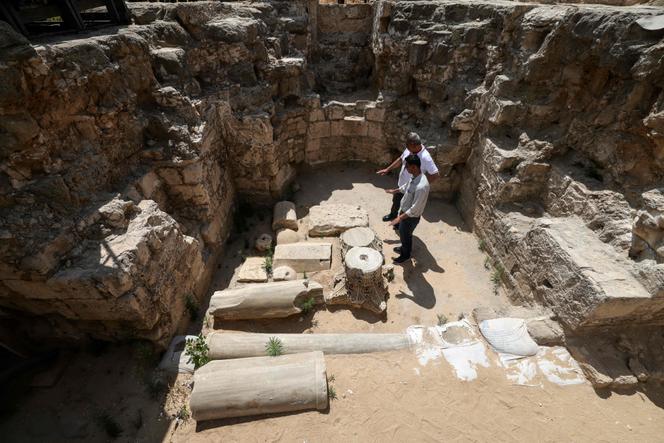


Nearly three decades of archaeological finds in Gaza were hurriedly evacuated Thursday, September 11, from a Gaza City building threatened by an Israeli strike, an official in charge of the antiquities told AFP.
"This was a high-risk operation, carried out in an extremely dangerous context for everyone involved − a real last-minute rescue," said Olivier Poquillon, director of the French Biblical and Archaeological School of Jerusalem (EBAF), whose storehouse housed the relics.
On Wednesday morning, Israeli authorities ordered EBAF − one of the oldest academic institutions in the region − to evacuate its archaeological storehouse located on the ground floor of a residential tower in Gaza City that was due to be targeted.
The Israeli army did not confirm the warning when asked by AFP, but several sources said France, UNESCO and the Latin Patriarchate of Jerusalem played a key role in securing a brief reprieve that allowed most of the artefacts to be removed.
"With almost no international actors left on the ground, no infrastructure, nothing functioning, we had to improvise transport, labour and logistics," said Poquillon.
The evacuation, he added, was carried out in strict secrecy, with "the overriding concern, as a religious organization, of not endangering human lives", as Israeli military pressed operations in the territory's largest urban hub.
The depot contained around 180 cubic meters of finds from Gaza's five main archaeological sites, including the fourth-century Saint Hilarion Monastery, listed as a UNESCO World Heritage site. All of these sites have been damaged, EBAF said, expressing concern for "unique" mosaics left exposed despite their fragility.
Poquillon said Gaza has "an extremely ancient heritage, very precious for the region, showing the succession and coexistence of peoples, cultures and religions".
Of Gaza's two museums, one has been destroyed and the other heavily damaged since the war erupted nearly two years ago.
Researchers told AFP that aside from scattered ruins highly vulnerable to bombardment, the EBAF storehouse was the only significant repository of artefacts left in the Palestinian territory.
The rediscovery of Gaza's past began in the wake of the 1993 Oslo Accords.
Two years later, the newly created Gaza antiquities service opened its first archaeological dig in cooperation with EBAF, unearthing remnants of the ancient Greek port of Anthedon and a Roman necropolis.
Excavations stalled after Hamas seized power in 2007 and Israel imposed a blockade, resuming years later with support from the British Council and French NGO Premiere Urgence Internationale (PUI).
Now, with Israel contemplating a full takeover of Gaza and ceasefire talks stalled, archaeologists say prospects for renewed excavations are remote.
UNESCO, which has already identified damage to 94 heritage sites in Gaza using satellite images, including the 13th-century Pasha's Palace, has not yet been able to take a full inventory. "We saved a large part, but in a rescue you always lose things, and you always face painful choices," said Rene Elter, an archaeologist affiliated with EBAF and scientific coordinator for PUI.
The depot, he said, was especially valuable because collections had been classified systematically. "Many items have been broken or lost, but they had been photographed or drawn, so the scientific information is preserved," Elter explained. "Perhaps that will be the only trace that remains of Gaza's archaeology − in books, publications, libraries."
